Reading time 7 minutes.
Konya is a city located in the center-south of Anatolia (the Asian peninsula, which corresponds more or less to the territory of Turkey). It is known to be very religious, conservative, and home to the Mevlevi Sufi order founded in 1273 by Rumi (also known as Mevlana, translated “our master”). I told you Wikipedia was a better read!
When we mention Konya to foreign travelers, they just ask us some recommendations. However, almost every time we talk about it with Turkish people, they are really surprised we chose to go there and ask us about our motivations and our opinions. I don’t think they have ever visited Konya. Many Turkish people seem to consider Konya as a very special place. The experience for Turks and for foreign tourists (This time I said tourists not travelers!) is probably different.
Slow it down
After spending four days in Cappadocia, where we had woken up very early several days in a row to catch hot air balloons, we needed some time to relax and take care of practical things. We cleaned clothes (Free washing machine!), planned the rest of the trip in Turkey since we put the planning aside during our time in Cappadocia. We also resolved the issue with paying off the new Scotiabank credit cards and figured out how to track our spendings and split the costs between us. The most useful tool we have is a simple spreadsheet where we enter our spendings daily to make sure we are on track.
In Konya, it felt like we were a bit off the main touristic routes. Suddenly, people were more interested in us: they saw us less as customers and financial opportunities. The contrast was huge compared to the previous destination, Goreme, which is a city completely dedicated to tourism. They came to us to talk in French, in English, and in Turkish, even if we don’t speak the language they tried to communicate.
A nice big policeman grabbed me by the arm for a selfie when I passed by him. I did not really have a say.
When we were enjoying a dondurma — Turkish mastic (plant resin) ice cream — for the first time, an old man came to us for a chat in French! He talked about his life in Sweden, where he spent five years with his former wife, who stayed there while he came back to Konya. He asked us what we thought about his hometown. This question is very common everywhere I travelled, although it seems to be more frequent when people are genuinely interested in your perspective as an outsider, or when they are really proud of where they live. I usually start by mentioning only the positive aspects, and I rarely have the opportunity to tackle the drawbacks. Time constraint, language barrier, and the feeling the other person only wants to reinforce the positive idea they have about the place they live in, are the main reasons I stick to the positives.
On our way to the train station, to leave Konya for Izmir, I decided to grab a 25 lira (0.83 euro) doner kebab, by far the best prices we have seen in Turkey. While waiting for the food, an old man talked to us completely in Turkish. It was one of the longest conversations (if we can call it that way) we had where we could understand so little. We grasped that he could speak German, unfortunately that did not really help.
We stayed at the Hostelida hostel, whose prices and location are the only advantages. We booked two beds in a dorm of four, they gave us a room with three beds, and we were on our own during the whole stay. On the first night, after 11 pm, while we were already sleeping, the receptionist woke us up because he forgot to scan our passports, although we had handed them to him during check-in. The door was very hard to close, and the lock ended up breaking, thankfully they replaced it on the same day. Toilet paper was missing all the time, we ended up asking for a roll and kept it with us. The shower doors could not close, hence, the floor was often extra wet. On a positive note, we met some Iranian cyclists at the washing machine. And we realized our rooms were next to each other. That encounter strengthened my desire to visit Iran and undertake a biking trip!
Since staying at that hostel all day to chill was as enticing as spending that time in an overcrowded old underground metro during a heatwave, we started looking for libraries and nice cafés. We stayed for a bit at the Konya Provincial Public Library, which is a comfortable place to study. Unfortunately, the tables, all displaying numbers, could be booked with the library card, so we were evicted more and more frequently, until we decided to move to a real public space: a bench in front of the library! It was a beautiful day and the Culture Park is a very pleasant green space. It has a very affordable and lovely café restaurant, which is a perfect place to spend as much time as you want. Given the rating, it might not be a great place to eat, however, the tea was only 7.5 liras (0.25 euro).
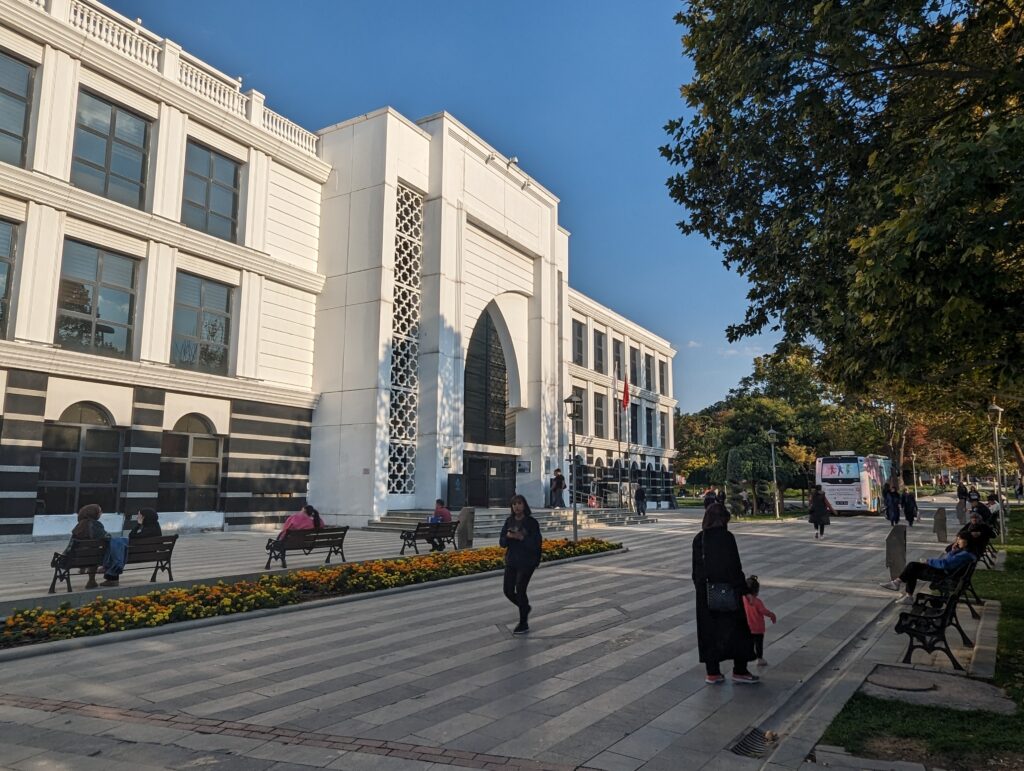
Two female students, saw us at the library (two foreigners hopping from table to table is pretty noticeable I believe), and approached us during one of their study breaks as we were sitting outside in the park. They were 18–19 years old, one of them, Sueda, spoke a good English making the communication easy. Suena actually came back to see us a second time when she left the library. We had a warm and honest conversation about hopes and dreams and relationships with other people with different beliefs and from different cultures. We exchanged written words of kindness, which could be read to seek comfort and joy from good memories.
Headscarves are definitely more common in Konya than in the rest of the country. At night, we saw almost no local women in the streets, or at the restaurants.
We came during the rose season; the rose garden at Alaaddin Hill Park was particularly nice.
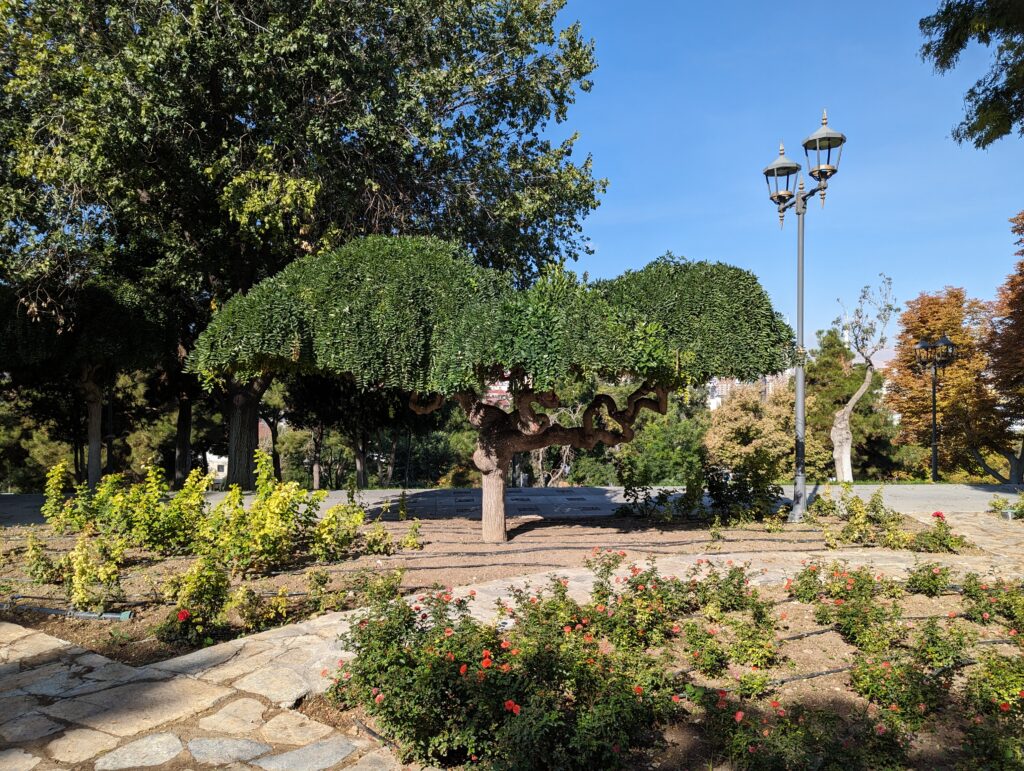
The center of Konya is very enjoyable with its public spaces, gardens, parks, and cafés.
Whirling Dervishes of Sufi Islam
Konya is the birthplace of the Mevlani Sufi order, founded by Rumi (Mevlana). A religious ceremony, involving whirling dervishes, is held every Saturday night at the Mevlana Cultural Center. It was at 7 pm and cost 100 liras (3.35 euros) when we attended it. On a single music of a few minutes, we counted more than 400 turns! Getting there before 7 pm was a bit challenging. At Goreme, we had to exchange the bus tickets for an earlier bus. According to the staff, it would arrive at 1 pm and the trip would be 2:30 hours long. It arrived at 13:50 pm, and we reached Konya at 6 pm. I have developed trust issues towards bus agencies. We took a taxi from the bus terminal to the Cultural Center because we would have been late with public transportation (2 tramways involved). The taxi was expensive compared to public transportation: 280 liras (9.5 euros) versus less than 40 liras.

The Mevlâna Museum is also the mausoleum of Rumi and many other important figures of the Melvavi order. Many Çelebi, head of the order, rest there. The mausoleum is the most impressive I have seen in Turkey, surpassing by far the sultans mausoleums in Istanbul. The audio guide was not great. It provided some good information about the life of Rumi, but terse, even sometimes useless, descriptions of the exhibited objects. The atmosphere is very different from what you would expect from a tomb. It is colorful, messy, richly decorated, imposing and busy.
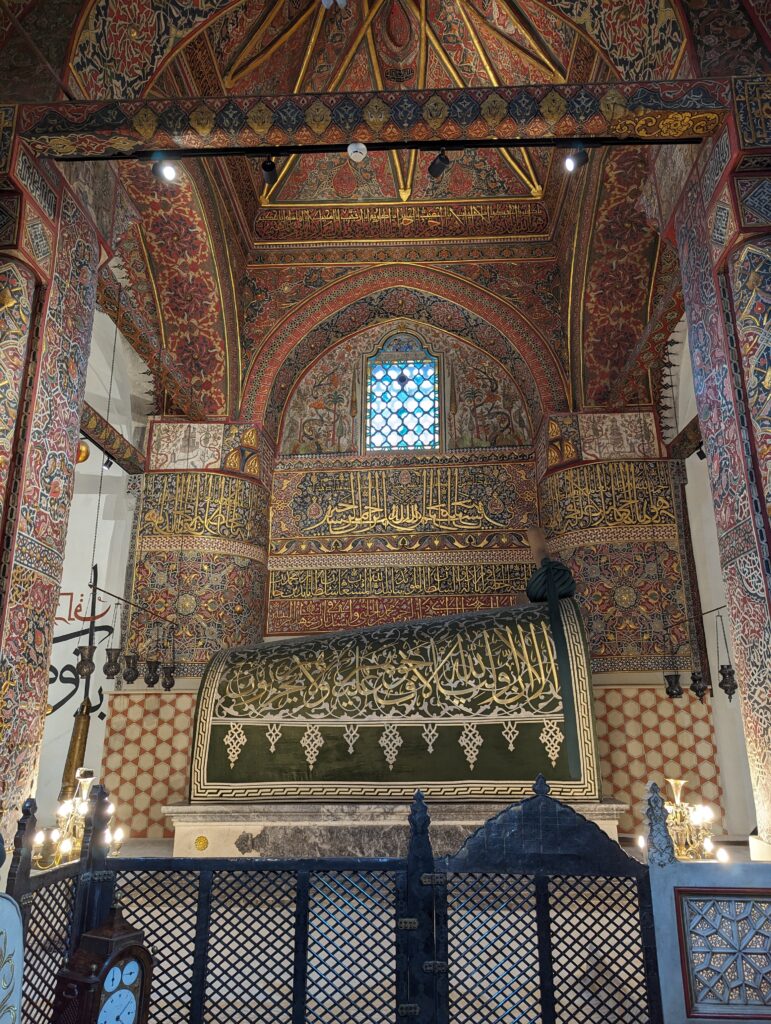
I am reading The Forty Rules of Love by Elif Shafak to learn about Sufism through the relationship between Rumi and his companion (neither a mentor or a disciple) Shams Tabrizi.
Ekliekmek and Delicious Sweets
Ekliekmek is the culinary specialty of Konya. It is a kind of very thin and long pide (Turkish Flatbread) with ground beef, tomato and green pepper.
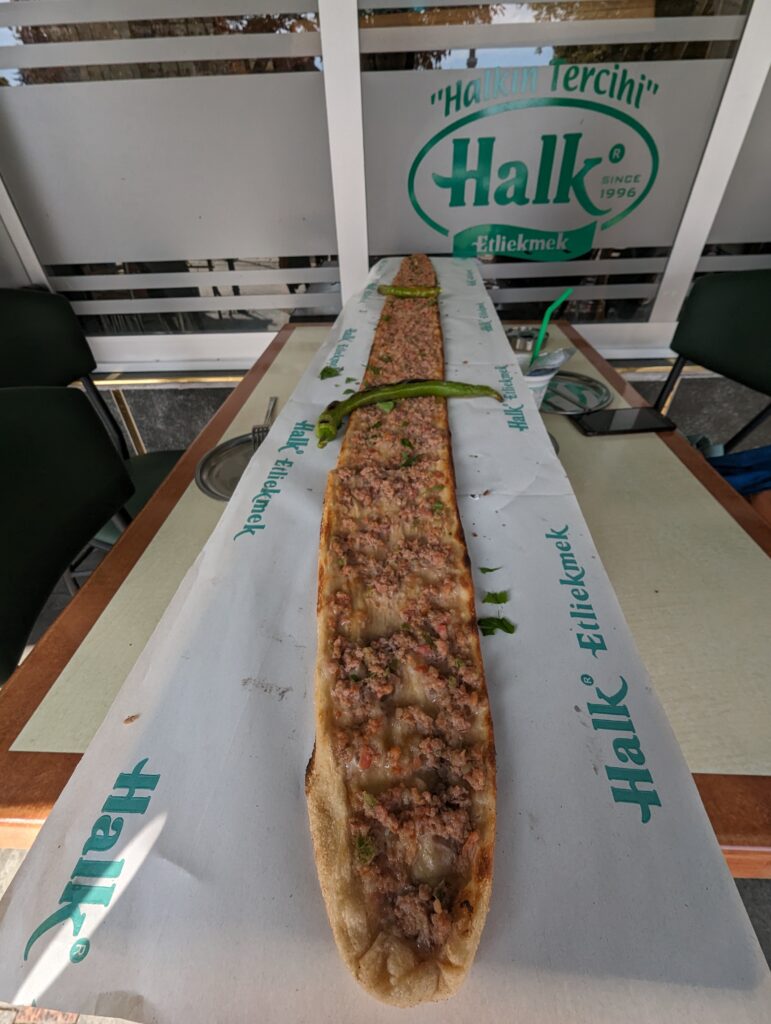
We also tasted the Recai Böreği at Halk Etliekmek Konya. It’s similar to ekliekmek with plenty of cheese. I prefer ekliekmek, Böreği is also very nice if you are a cheese lover. They came with many, mostly marinated, sides.
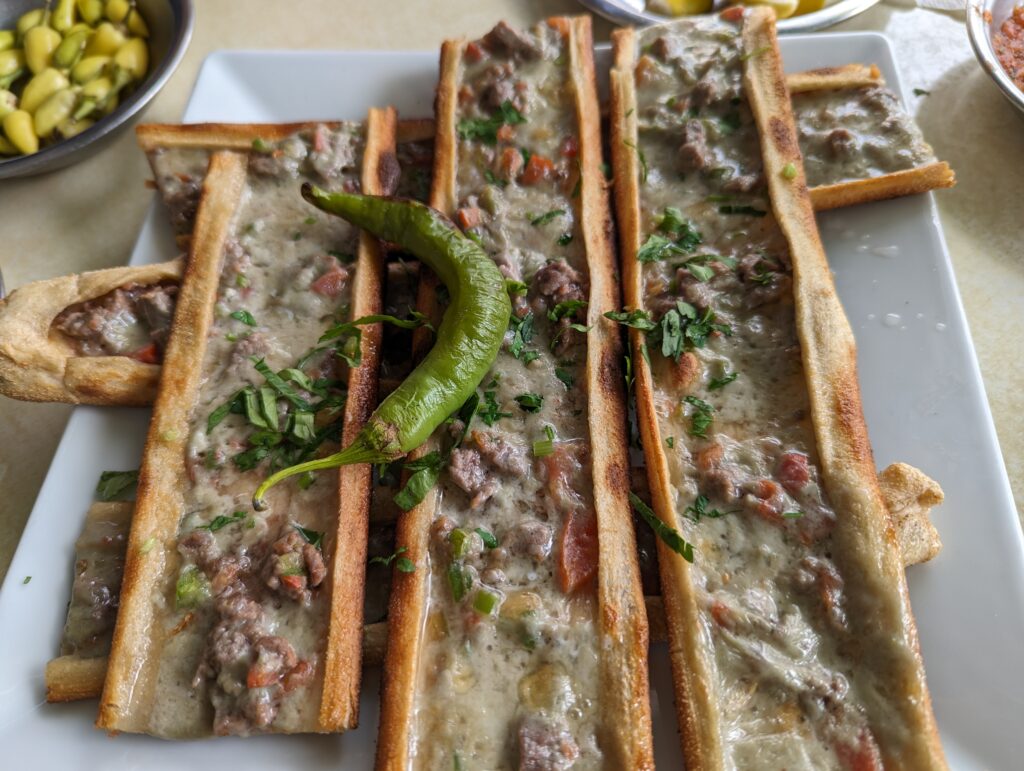
We had some delicious loukoums, also called Turkish delights, at Adnan Effendi. I naively thought loukoums were limited to the flavored (rose is my favorite) jelly. There are actually so many kinds! Compared to the ones we tasted in the bazaars in Istanbul, they were less sweet, more compact, and more flavorful.
The höşmerim, cheese helva topped with nuts, we had for dessert at Sifa was amazing.
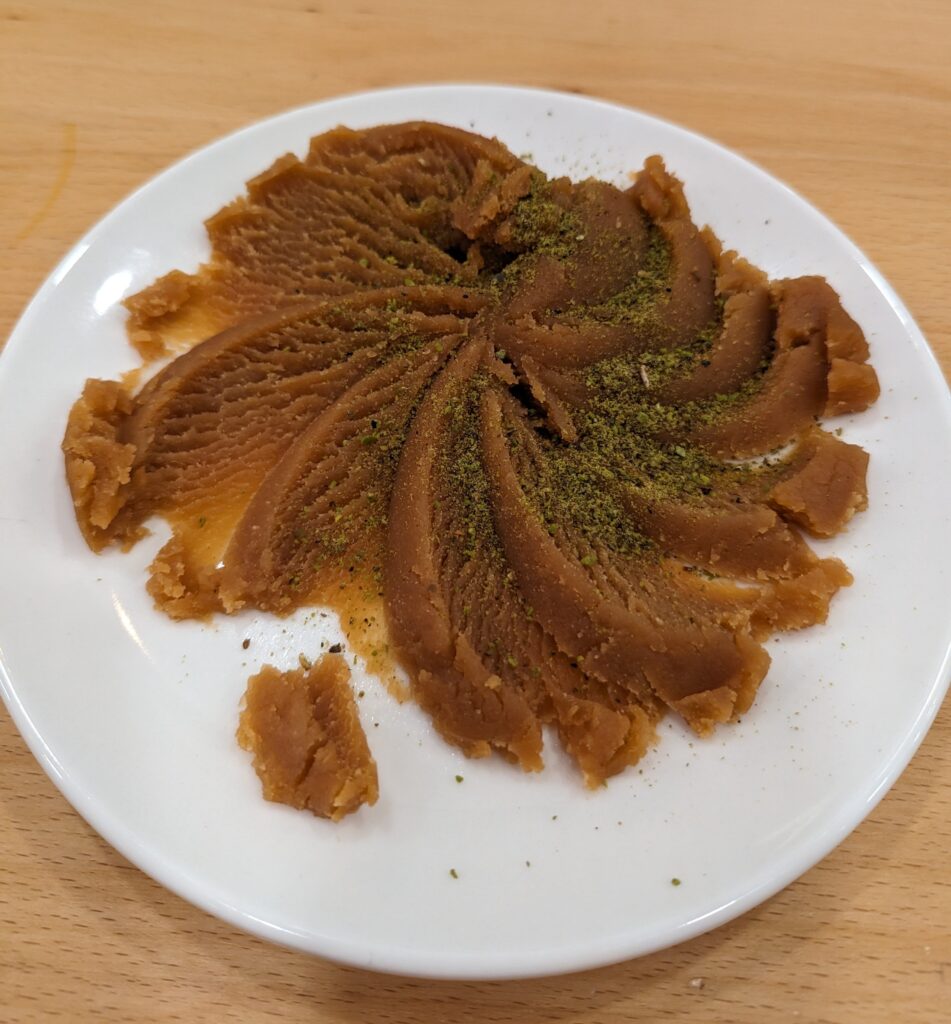
We found a delicious dessert place, Zümrüt Tatlısı, where we discovered the Künefe (a warm desert with cheese), tried various baklavas and more pastries.
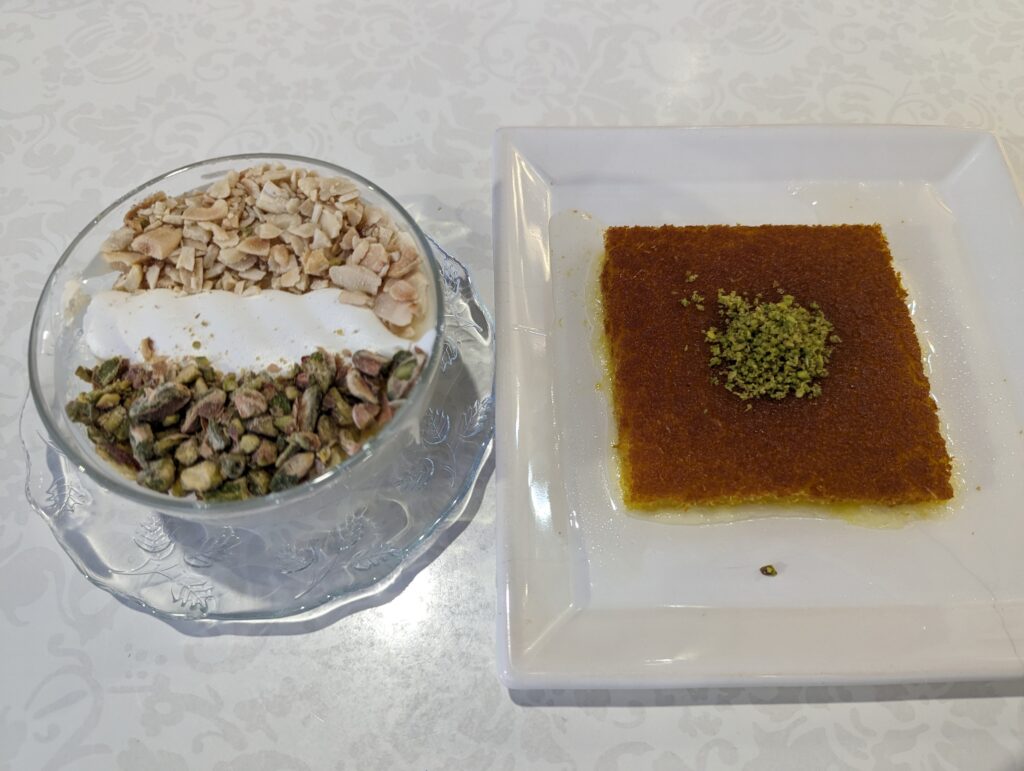
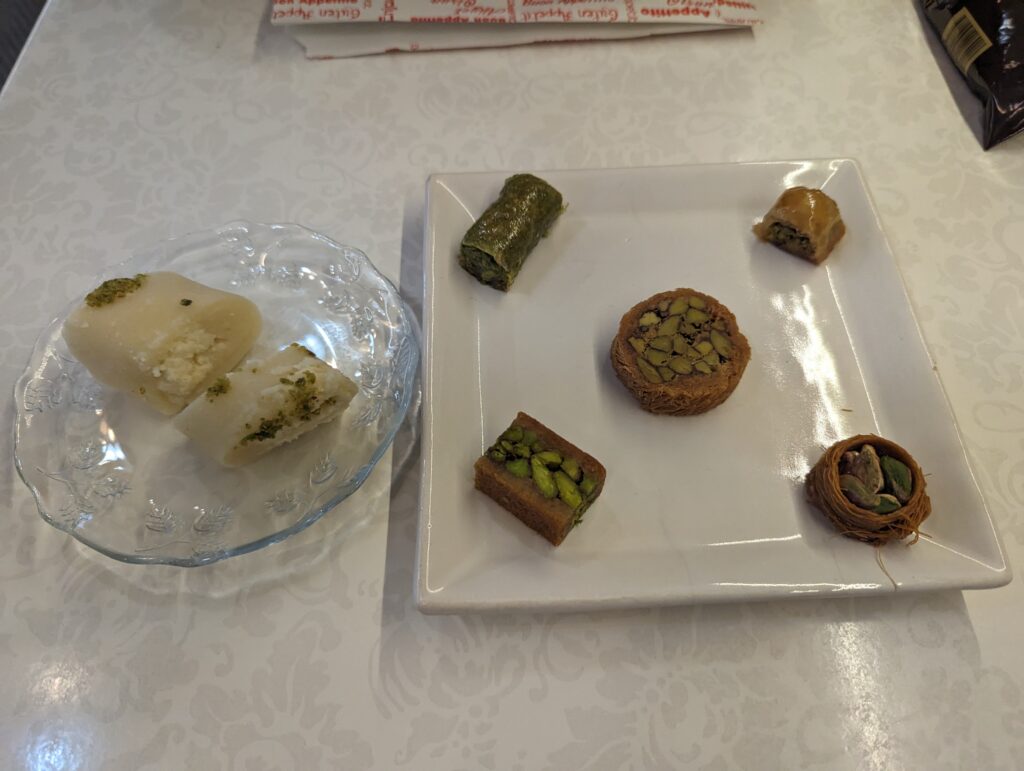
Our love for Turkish sweets and pastries definitely grew in Konya.
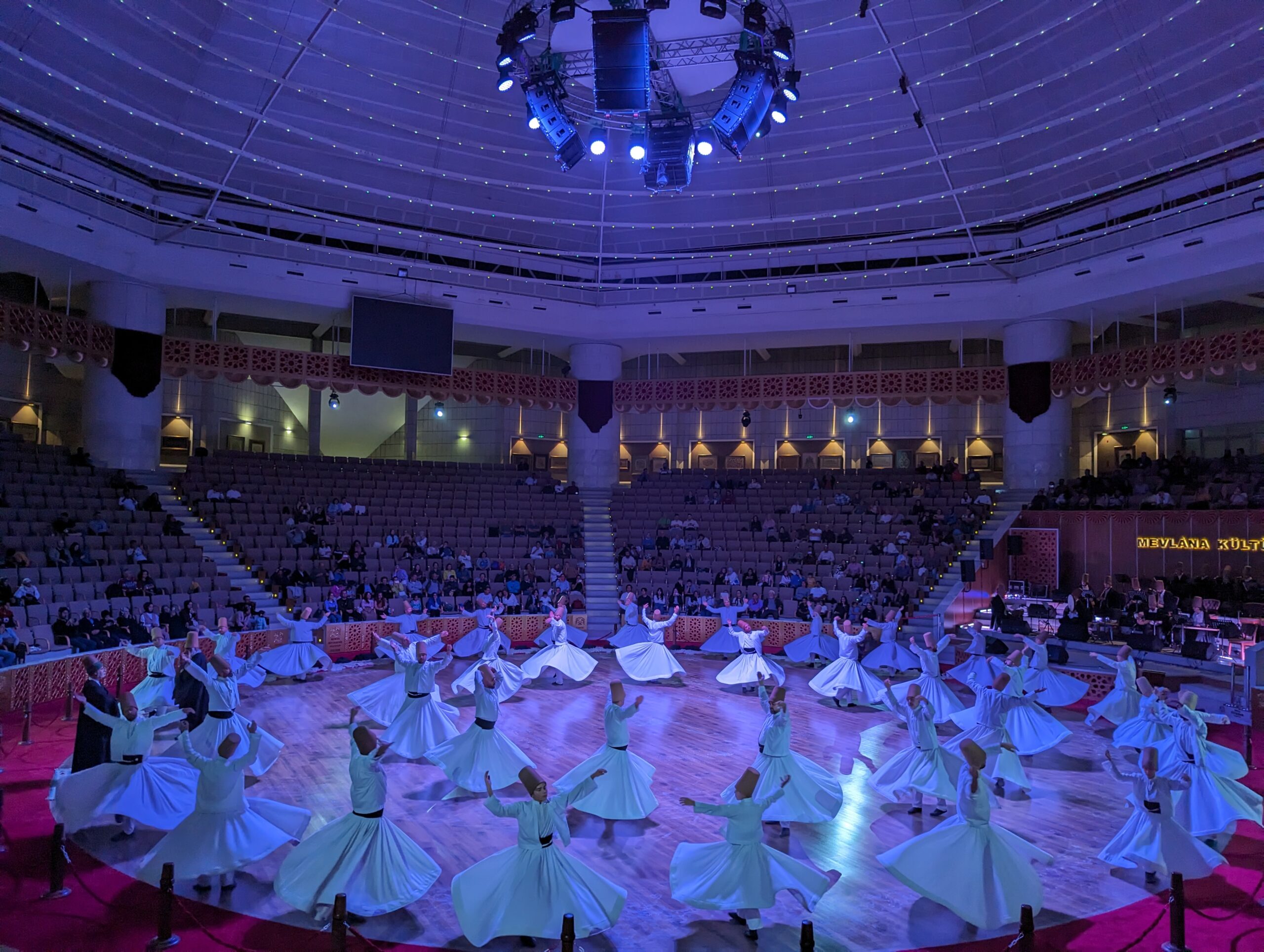
Leave a Reply